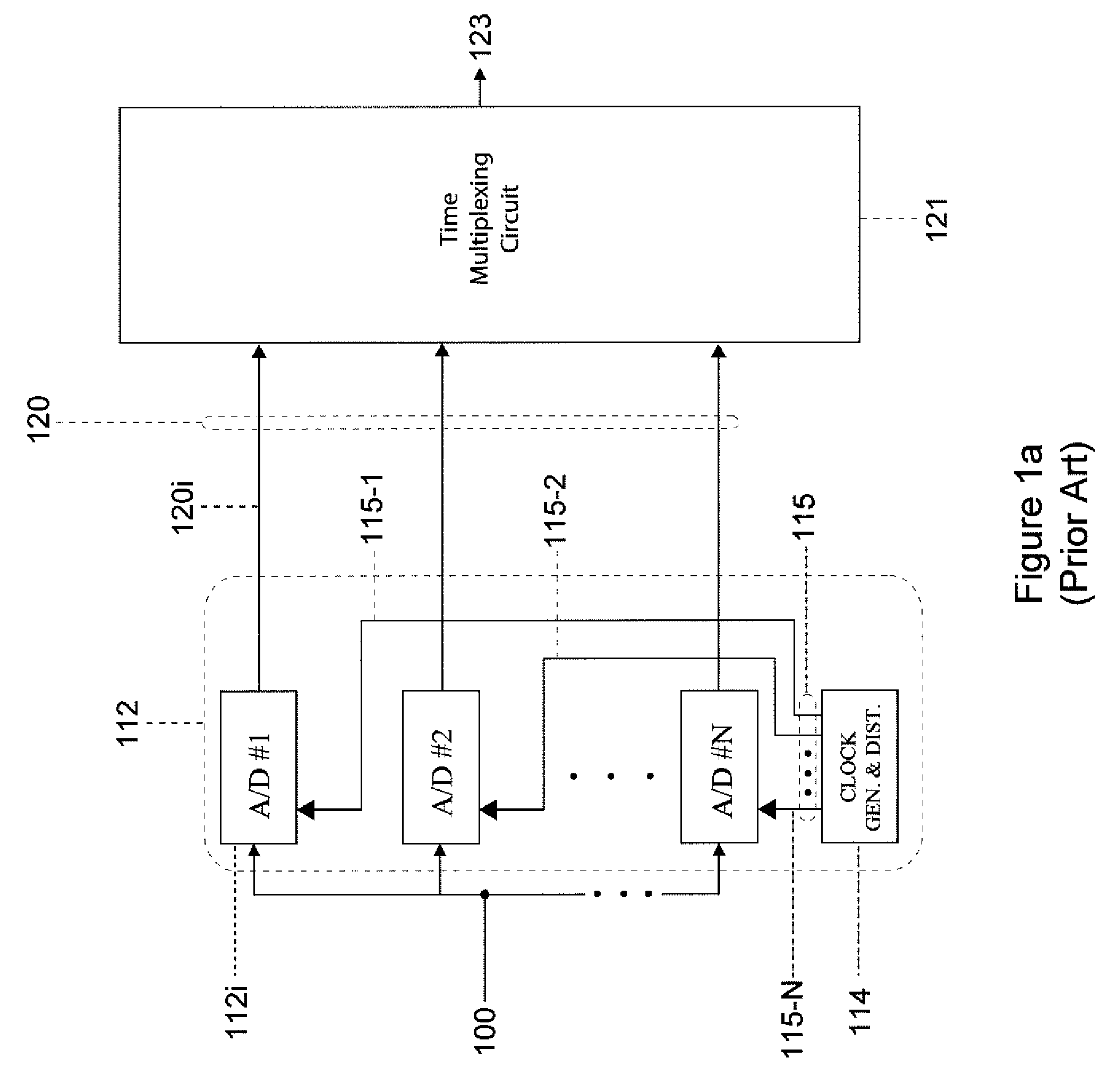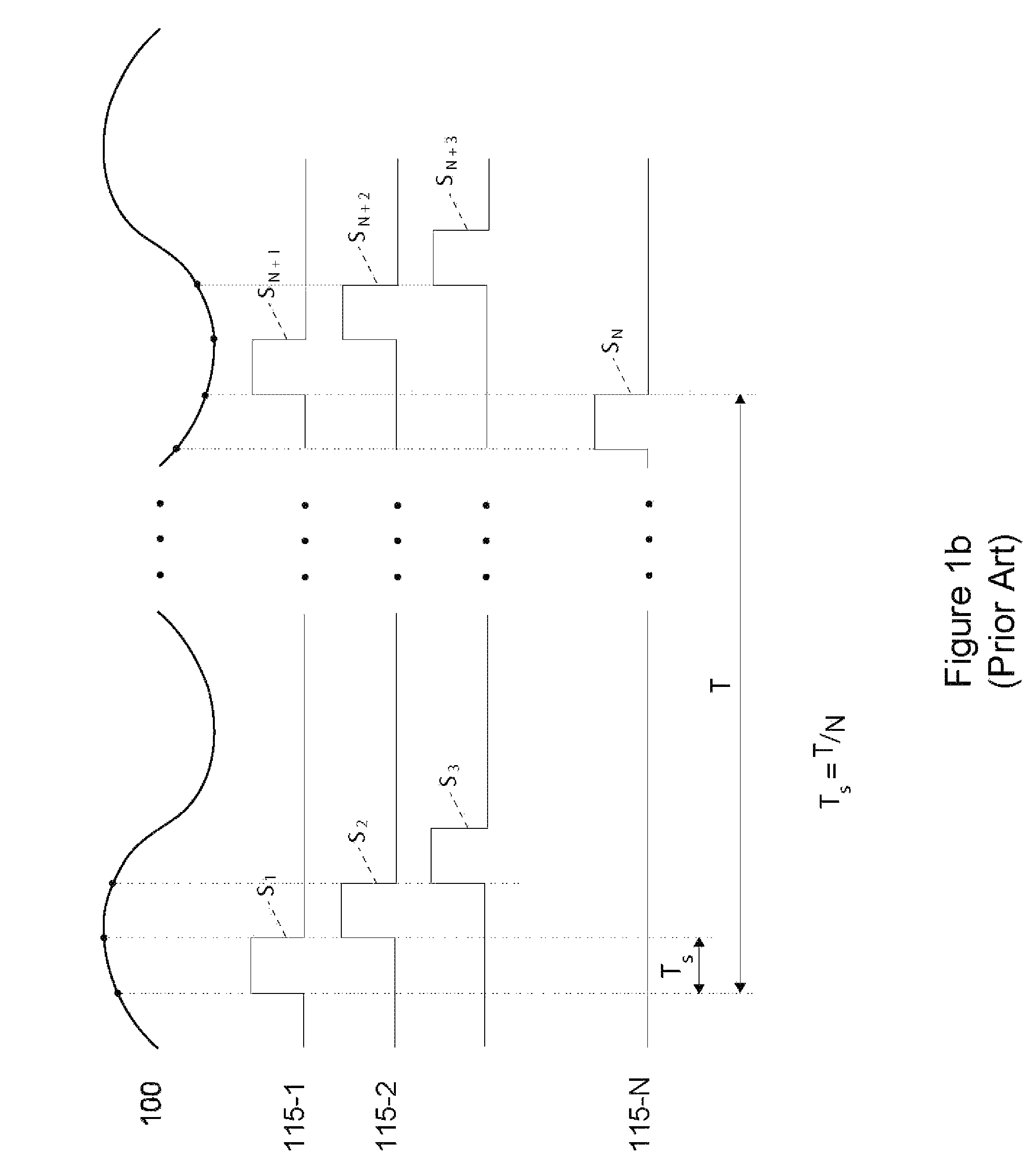Enhanced time-interleaved A/D conversion using compression
a compression and time-interleave technology, applied in the field of compression, can solve the problems of storing sampled data in semiconductor memory or on disks, unable to keep up, and creating bottlenecks and large memory requirements, so as to achieve a higher compression ratio and reduce the quality of the decompressed stream created during lossy compression
- Summary
- Abstract
- Description
- Claims
- Application Information
AI Technical Summary
Benefits of technology
Problems solved by technology
Method used
Image
Examples
Embodiment Construction
[0036]The present invention compresses signal samples output from a TIADC. A block diagram of a conventional TIADC familiar to those skilled in the art is given in FIG. 1a. The TIADC of FIG. 1a is designed to achieve a sample rate fs that is N times as great as the sample rate fsADC of an individual ADC by using N parallel ADCs, where N is at least 2. Clock generator and distributor 114 provides timing control signals 115 for activating each of the ADCs 112i at predetermined time intervals. For example, timing control signals 115-1, 115-2 and 115-N are coupled to A / D#1, A / D#2 and A / D#N, respectively. Upon activation by timing control signals 115, each ADC 112i samples an analog signal 100 to produce a signal sample 120i. During a clock interval T, the TIADC produces a plurality of signal samples 120 that are consecutive and separated in time by a predetermined sampling interval Ts. In a conventional TIADC, a time multiplexing circuit 121 selectively receives the plurality of signal ...
PUM
 Login to View More
Login to View More Abstract
Description
Claims
Application Information
 Login to View More
Login to View More - R&D
- Intellectual Property
- Life Sciences
- Materials
- Tech Scout
- Unparalleled Data Quality
- Higher Quality Content
- 60% Fewer Hallucinations
Browse by: Latest US Patents, China's latest patents, Technical Efficacy Thesaurus, Application Domain, Technology Topic, Popular Technical Reports.
© 2025 PatSnap. All rights reserved.Legal|Privacy policy|Modern Slavery Act Transparency Statement|Sitemap|About US| Contact US: help@patsnap.com



